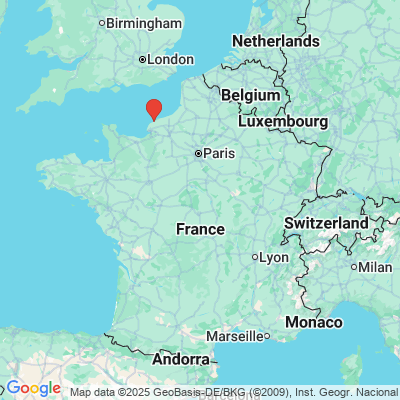Robert the Magnificent of Normandy portrayed on the Genealogical Chronicle of the English Kings.
In the early 11th century, Normandy was still a young duchy—rich, restless, and ruled by a man whose life reads like a Norse saga. Robert I of Normandy (c. 1000 – 1035), remembered as Robert the Magnificent, was the son of Duke Richard II and the father of William the Conqueror.
Though only in his late twenties when he took the ducal mantle in 1027, Robert quickly earned a reputation for daring and spectacle. He kept the feudal barons in line, encouraged trade along the Channel coast, and cultivated ties with the great abbeys that dotted Normandy. Yet his most enduring story began not in a council chamber but on the open sea.
A Storm, a Vow, and Three Chapels
Legend tells that Robert was caught in a violent storm while crossing the Channel. As waves threatened to swallow his ship, he prayed to the Virgin Mary, promising that if he survived he would build three chapels of gratitude along Normandy’s coast. He reached land safely, and the vow became action:
La Délivrande, near Caen – Today a celebrated Marian shrine (Basilique Notre-Dame de la Délivrande), it grew from a humble chapel into one of Normandy’s oldest continuous pilgrimage sites.
Notre-Dame de Grâce, Honfleur – Perched high above the Seine estuary, this chapel became a sailors’ sanctuary. Generations of fishermen and explorers—from cod fishermen bound for Newfoundland to long-distance captains of the Age of Discovery—left ex-votos (model ships, plaques, and prayers) in thanks for safe voyages.
Notre-Dame de Salut, Fécamp – Built on a windswept cliff, this chapel doubled as a beacon for shipping. Even when religious wars ravaged it and its roof collapsed, the faithful of Fécamp rebuilt and returned. To this day departing vessels salute the site with three blasts of their horn, asking for “good wind and a safe return.”
Together these three sanctuaries stitched a spiritual safety net along Normandy’s maritime frontier—a chain of devotion and seamanship that long outlasted the duke who inspired them.
A Duke Larger than Life
Robert’s life ended as dramatically as it began. In 1035, during a pilgrimage to Jerusalem, he died suddenly—likely of illness—at Nicaea on the return journey. His young illegitimate son, William, would grow up to become William the Conqueror, reshaping European history.
Yet Robert’s own legacy is more than dynastic. His votive chapels stand as monuments to a ruler who linked faith and the sea, transforming a desperate prayer in a storm into three centuries-old beacons that still guide sailors and pilgrims alike.
Notre-Dame de Salut, Fécamp.
Further Reading
David Bates, Normandy Before 1066
Elisabeth van Houts, The Normans in Europe



